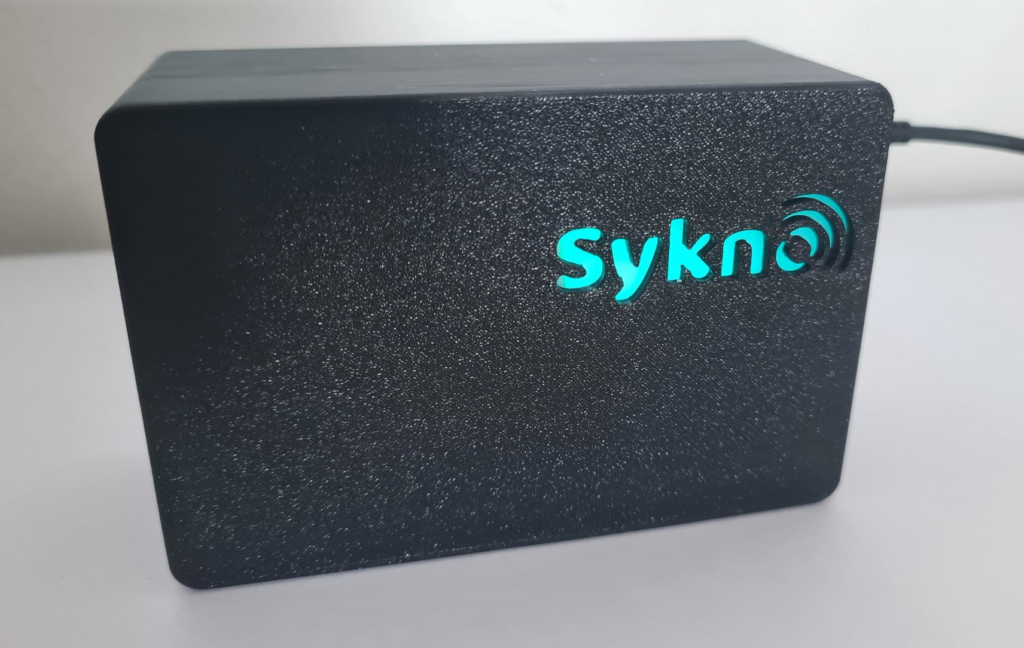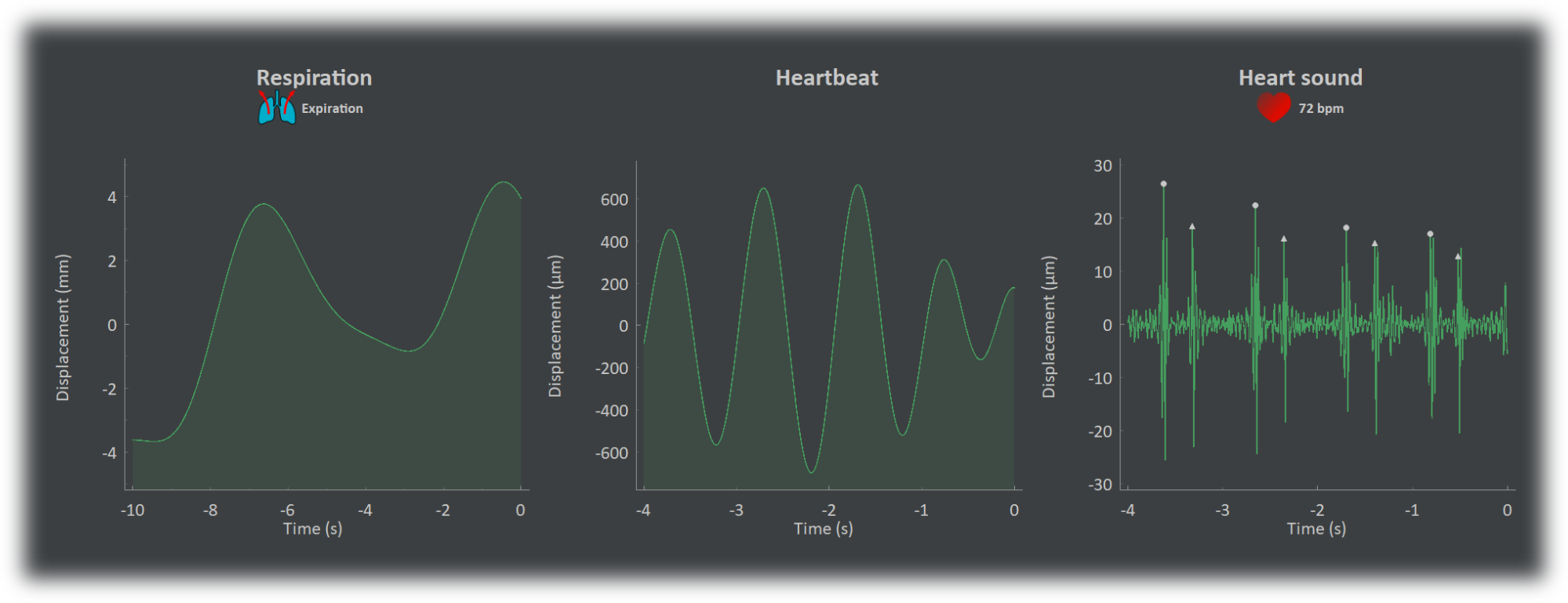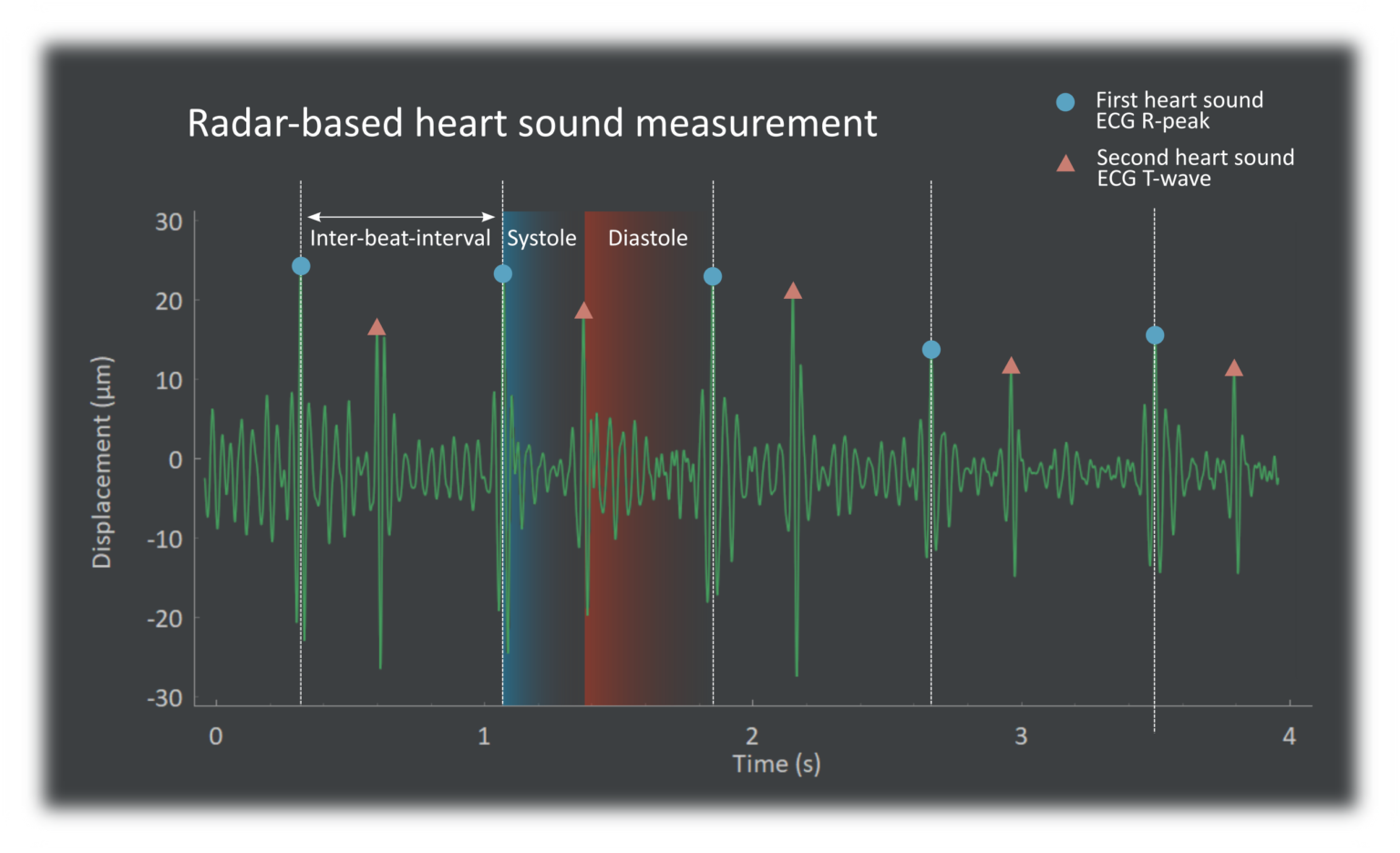Radar-based Measurement of Vital Signs and Heart Sounds

Applications
Did you already know that high frequency sensor systems and especially contactless and invisible low-power radar technology are capable of the following?
- Monitoring of the driver’s condition in vehicles (truck, train, plane, taxi)
- Anonymous monitoring of the stress and recovery state of travelers in vehicles
- Non-contact and high-resolution monitoring of sleeping babies
- Detection of sleep apnea
- Determination of the current phase of the cardiac cycle (systole or R-wave in the ECG, diastole or T-wave in the ECG)

Detectable vital signs and their relevance
Pulse and respiration are the primary vital signs. By knowing them, the current physiological condition of a person or animal can be determined very precisely. Basically, a distinction is made between three different levels of heart rate detection in terms of accuracy.
- With the lowest measurement resolution, the heart rate can be determined, allowing statements to be made about the current activity status or even the mean resting pulse.
- In the second stage, the measurement of the heart rate is so accurate that, in addition, the temporal intervals between the individual heartbeats can be determined to within a few milliseconds, known as inter-beat intervals (IBI). The temporal variation of these intervals, also called heart rate variability (HRV), can be used to indirectly measure the respiratory rate. It also provides information about the state of the autonomous nervous system and thus about the current state of stress or recovery. A low HRV describes a stressed and a high HRV a relaxed state.
- Another important parameter, which is conventionally recorded by the physician using a stethoscope, are the heart sounds. In healthy adults, two heart sounds in quick succession can be heard at each heartbeat. By detecting a 3rd or 4th heart sound, a pathological heart defect or heart disease can be assumed with a high degree of certainty in adults. The first heart sound is synchronous with the R wave in the ECG and thus marks the beginning of systole. The second heart sound occurs at the same time as the T wave in the ECG and initiates diastole.

All three stages, i.e. heart rate, respiration rate, heart rate variability and heart sounds, can be directly detected simultaneously with Sykno’s radar technology. The measurement is highly accurate, contactless, robust and independent of ambient brightness. Compared to other radar-based products that only detect respiration or movement, our systems provide a significantly more valid statement about medically relevant parameters. Our systems can be integrated in seats, mattresses, under beds or behind coverings.
Compared to the measurement by ECG, the effort is significantly reduced here, since no electrodes are necessary. At the same time, the personnel effort is reduced and the hygiene is increased by the non-contact measurement. Outside of the medical application, as already shown at the beginning, the possible usecases in the consumer sector are also diverse. Of particular note is the anonymity provided by radar compared to camera-based approaches. It is also important to mention that the requirements for the system change depending on the application, which is why a tailored radar system is essential for maximum performance.
Product ViRa24
How can your product be improved with radar technology for non-contact measurement of vital signs and heart sounds? Sykno provides access to this technology so that you can improve the life of your patients or your customers’ customer experience. Find out further details on new our vital sign evaluation system ViRa24 here.
Would you like to know more about radar-based vital sign measurement or are you interested in a live demo?
We look forward to hearing from you!
Further information
If you are interested in the general functionality of the radar, please take a look at this article. An overview of other applications can be found in the publication presented here. Furthermore, scientific publications regarding the featured technology can be found in our references.
Real measurement data making proof of the signal quality for different subjects and with different clothing is presented in the following video: